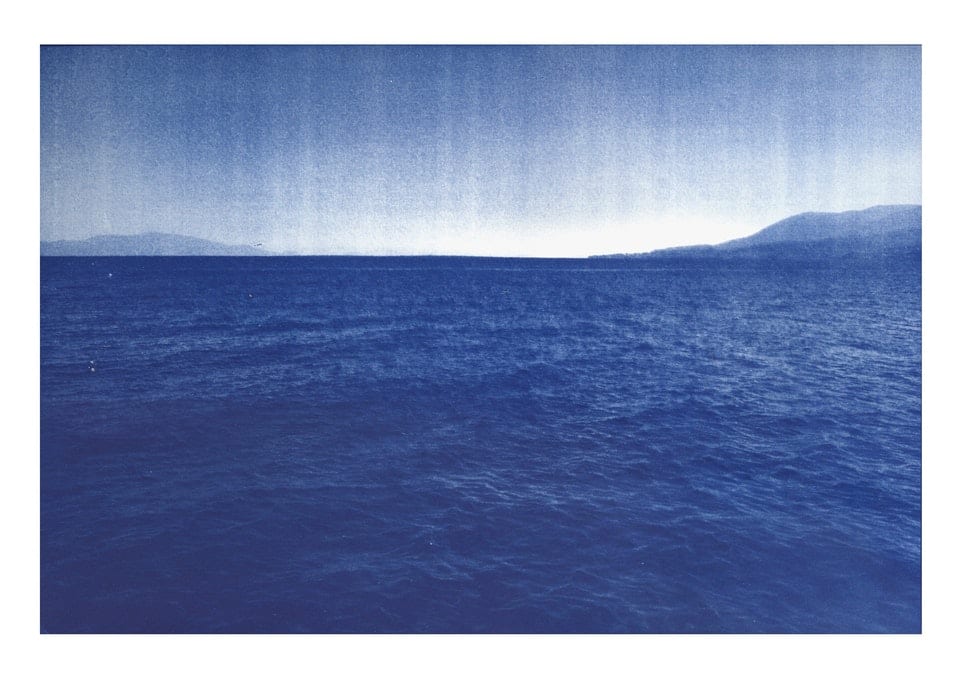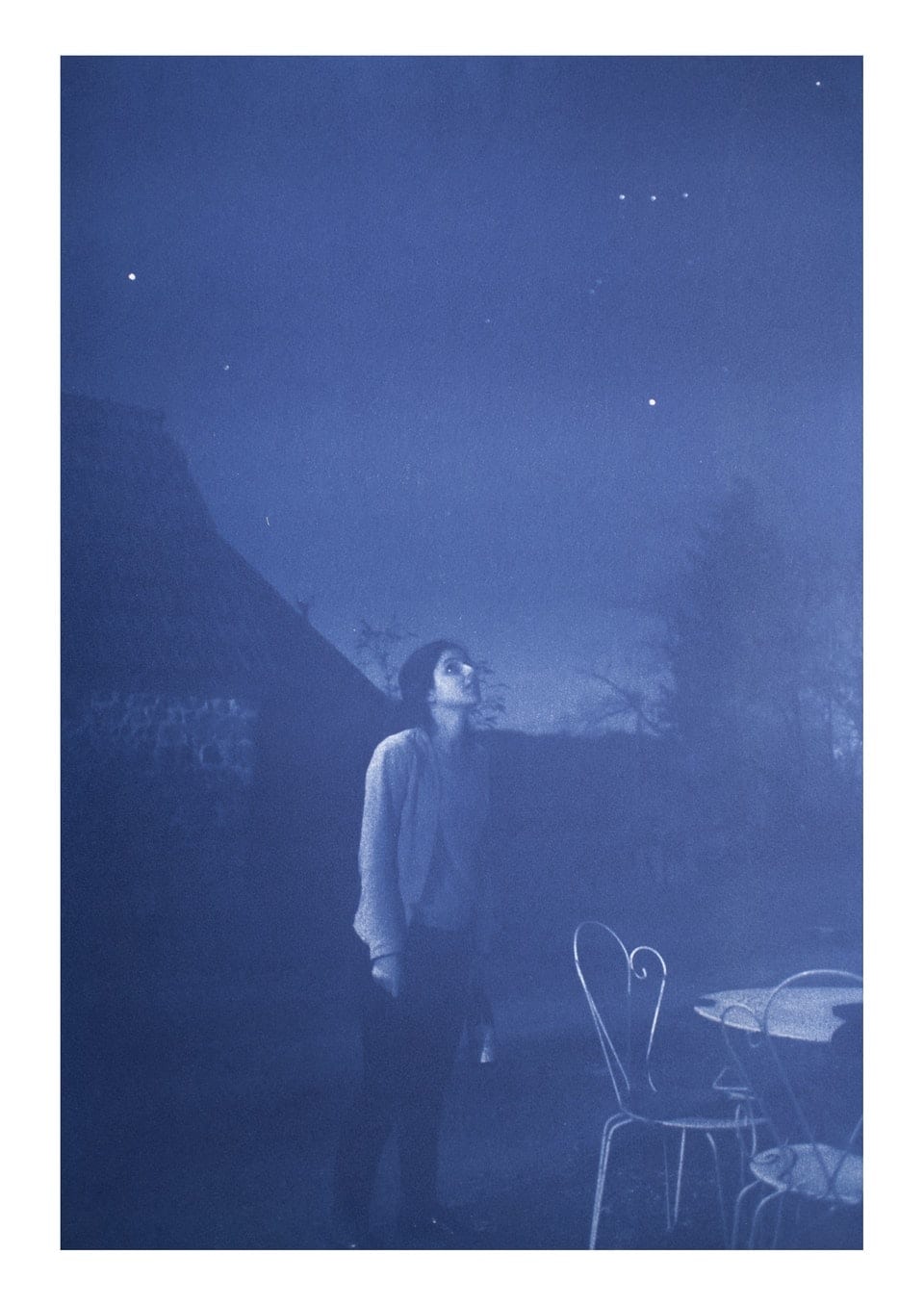Winner of the BJP International Photography Award 2020, Lhuisset masterfully parallels the heroism of Kurdish guerilla fighters in Iraq with their plight once they come to seek refuge in Europe
L’Autre rive is on show at TJ Boulting Gallery until 22 May 2021. The exhibition is sponsored by Beyond Print.
BJP International Photography Award 2021 is now open, recognising contemporary talent of the highest calibre. Enter now.
In August 2012, Emeric Lhuisset was crouched behind a wall in Aleppo, Syria. Around him, rebel fighters clashed violently with President Bashar al-Assad’s military. When the storm of bullets finally ceased, Lhuisset emerged to see a fighter with an AK-47 rifle in front of him. As the Parisian artist lifted his camera, the fighter struck a pose: he pretended to shoot his gun. “So, what becomes of ‘reality’ in this picture?” Lhuisset asks. “Is the photograph staged, and therefore a lie? Or, if [the fighter] really had been shooting like this two minutes earlier, is it true?”
Lhuisset is intrigued by notions of ‘staging’. To stage an image in the context of conflict photography can often be considered an act of dishonesty, synonymous with manipulation. “But staging is just a process,” says Lhuisset. “You can lie in a picture with no staging, and you can stage a picture that is true.”
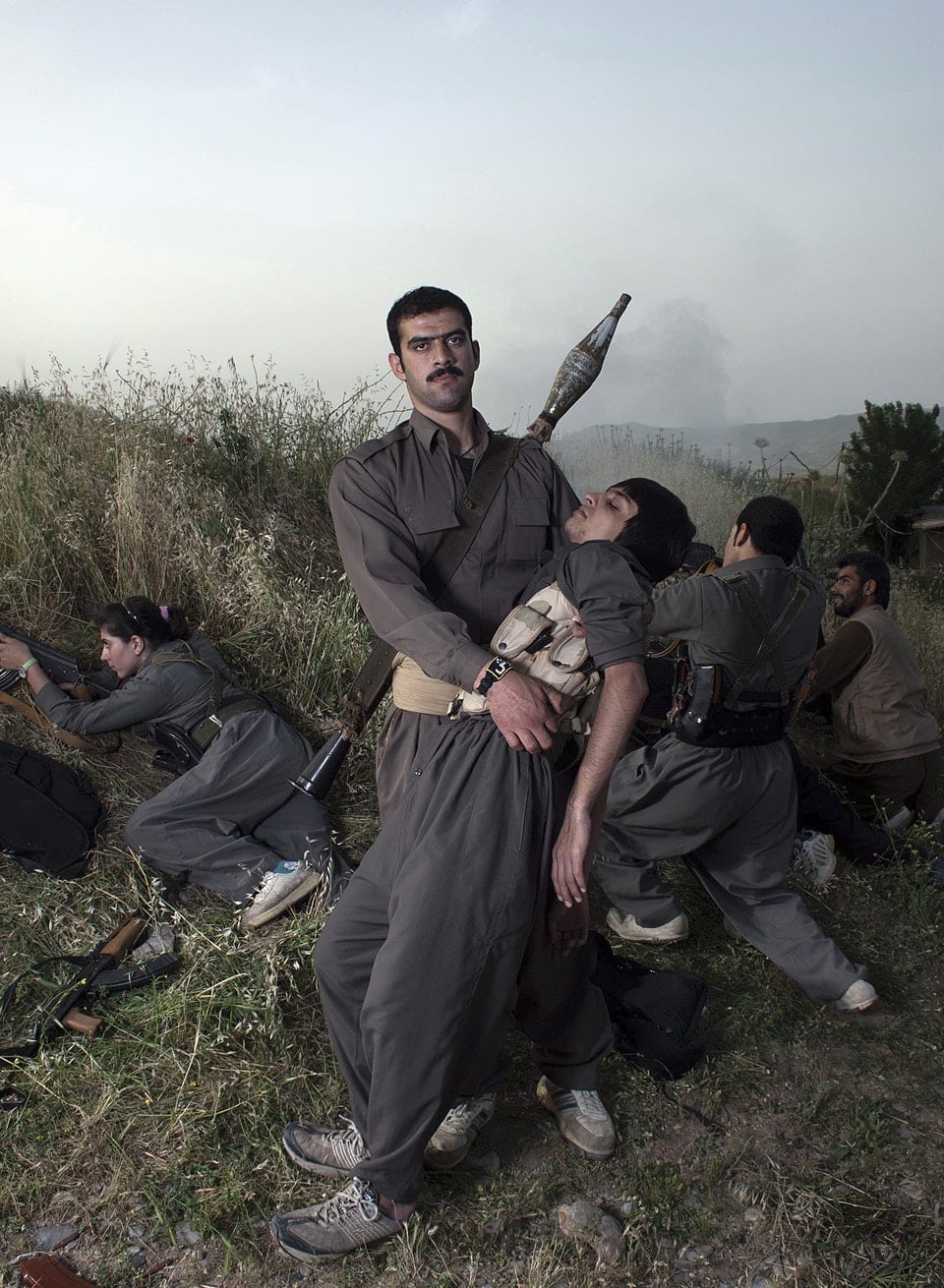
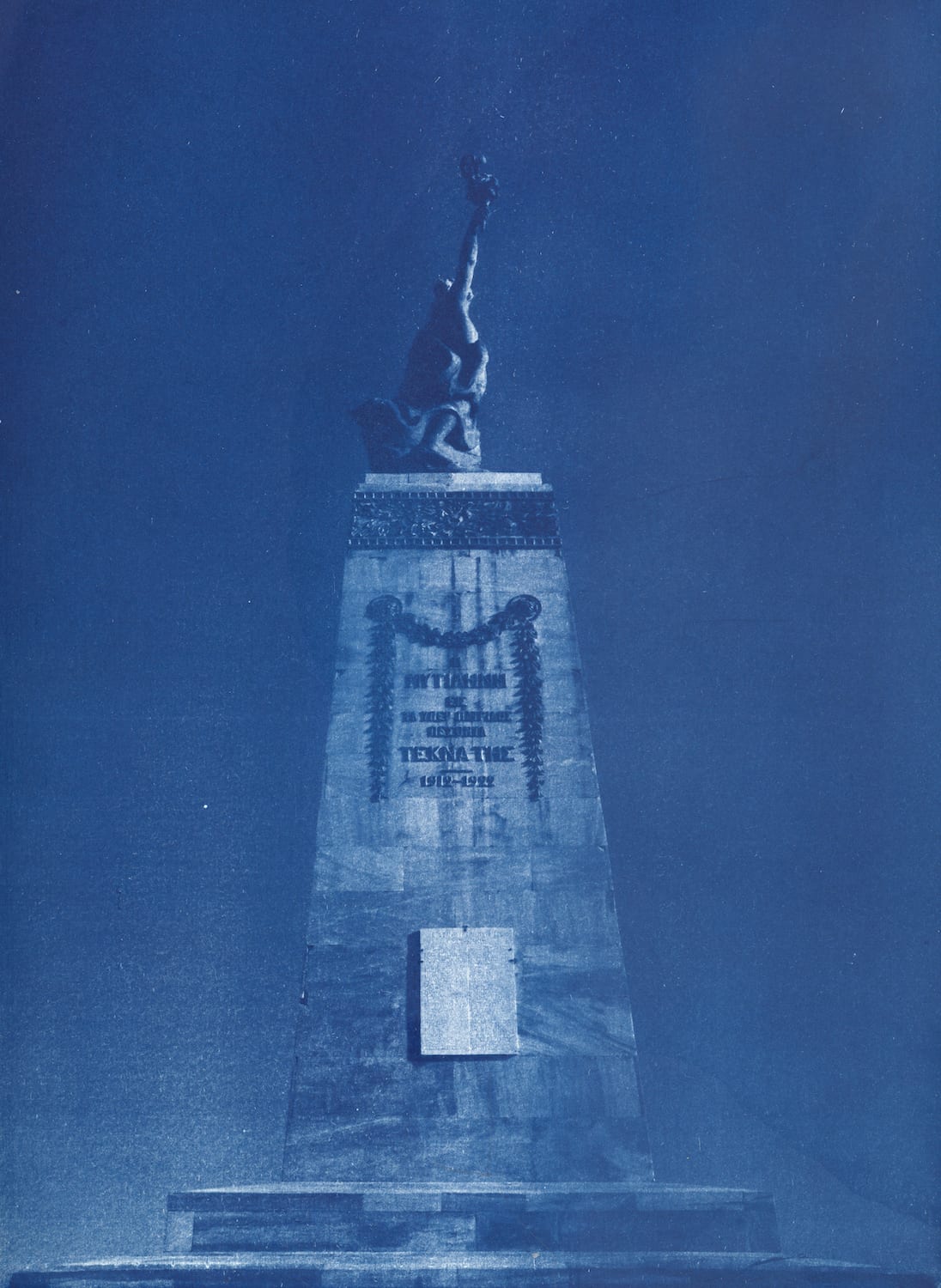
Many iconic images in the history of conflict photography are staged: take Robert Capa’s ‘Falling Soldier’, one of the most famous war images in the world, now widely speculated to have been staged. More recently, praised combat photographers such as the Associated Press’s Narcisco Contreras, or the Swedish freelancer Paul Hansen, have been rebuked for digitally altering or editing photographs from the Syrian civil war and Gaza, respectively, to enhance their shots. In a 2015 study of how the digital revolution has impacted photojournalism, 52% of photojournalists said they ‘sometimes’ stage images, with a further 12% saying they did so at least half the time.
In his series Theatre of War, Lhuisset interrogates the dramatised image of conflict by staging authentic Kurdish guerilla groups against the backdrops of real warzones. Between 2011 and 2012, he integrated himself into camps of fighters in the Middle East, and worked with them to replicate combat scenes inspired by classical paintings of the Franco-Prussian War of 1870. “These paintings laid the foundations for war photography as we see it throughout the 20th century,” says Lhuisset, who holds degrees in both geopolitics and fine art. “We see the heroism of the fighter and the absurdity of the war. Many painters were called upon to join the army under conscription… So it was painters who [portrayed] the war as the war photographers would come to do later.”
To observe Theater of War is to experience an uncanny paradox of hyperrealism and feigned exaggeration: one that masterfully merges the boundaries of truth, fiction, authenticity and performance, calling into question both our perception of conflicts throughout history and the relationship between photojournalism and ‘truth’ today.
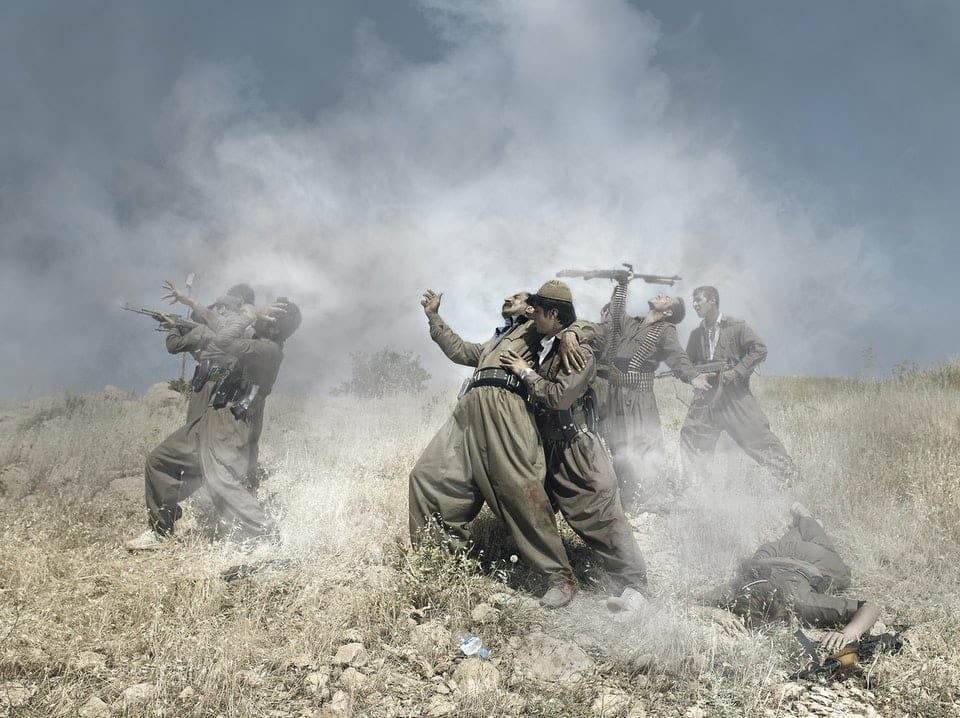
“Suddenly these Kurdish fighters, who were heroised by most westerners for their fight against ISIS, were being considered parasites by many of the same people once they had crossed the sea”
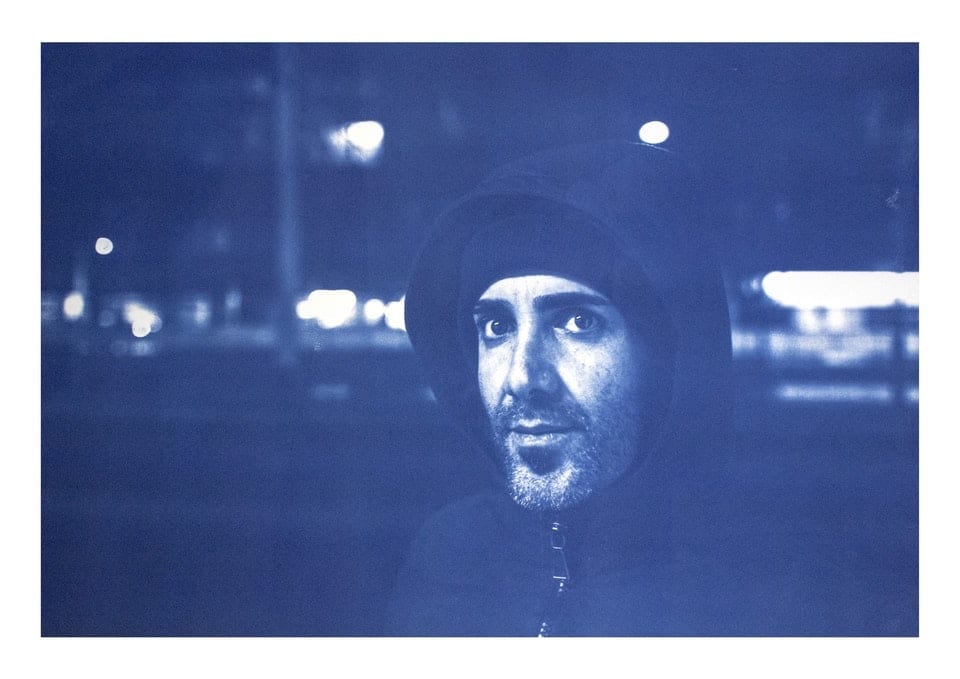
Notions of perception and representation, as shaped by the media, remained on Lhuisset’s mind until he came to shoot another series, L’autre rive, eight years later. The same fighters whom he had photographed in Iraq had fled the war to seek refuge in Europe, but were met with xenophobia and hostility from both the press and wider population. “Suddenly these Kurdish fighters, who were heroised by most westerners for their fight against Isis, were being considered parasites by many of the same people once they had crossed the sea,” he explains. Today, he presents the two series together in a bid to force viewers to confront this hypocrisy: the same faces, nearly a decade apart.
L’autre rive, an intimate and affecting series of cyanotypes, documents Lhuisset’s migrant friends in the privacy of their daily lives on European soil: taking selfies, writing poetry, gazing at the stars; not as suffering or in desperation, as migrants of the refugee crisis are so often represented. “If nobody told you it was a project about refugees, you’d never know,” the photographer muses. “It could be your life, it could be mine, it could be the life of all of us.”
Usually, Lhuisset modifies the chemical process so that, when exhibited, the cyanotypes fade gradually to blue monochrome over a period of days. Thus the blue that permeates L’autre rive serves as a double metaphor: both for the Mediterranean Sea, where so many refugees – including Lhuisset’s own friend Foad – have tragically disappeared, and for Europe. “Because all of these refugees are part of the future of Europe,” he says. “They are future Europeans.”
L’Autre rive is on show at TJ Boulting Gallery, Fitzrovia, until 22 May 2021 The exhibition is sponsored by Beyond Print.
Enter the BJP International Photography Award 2021 now
